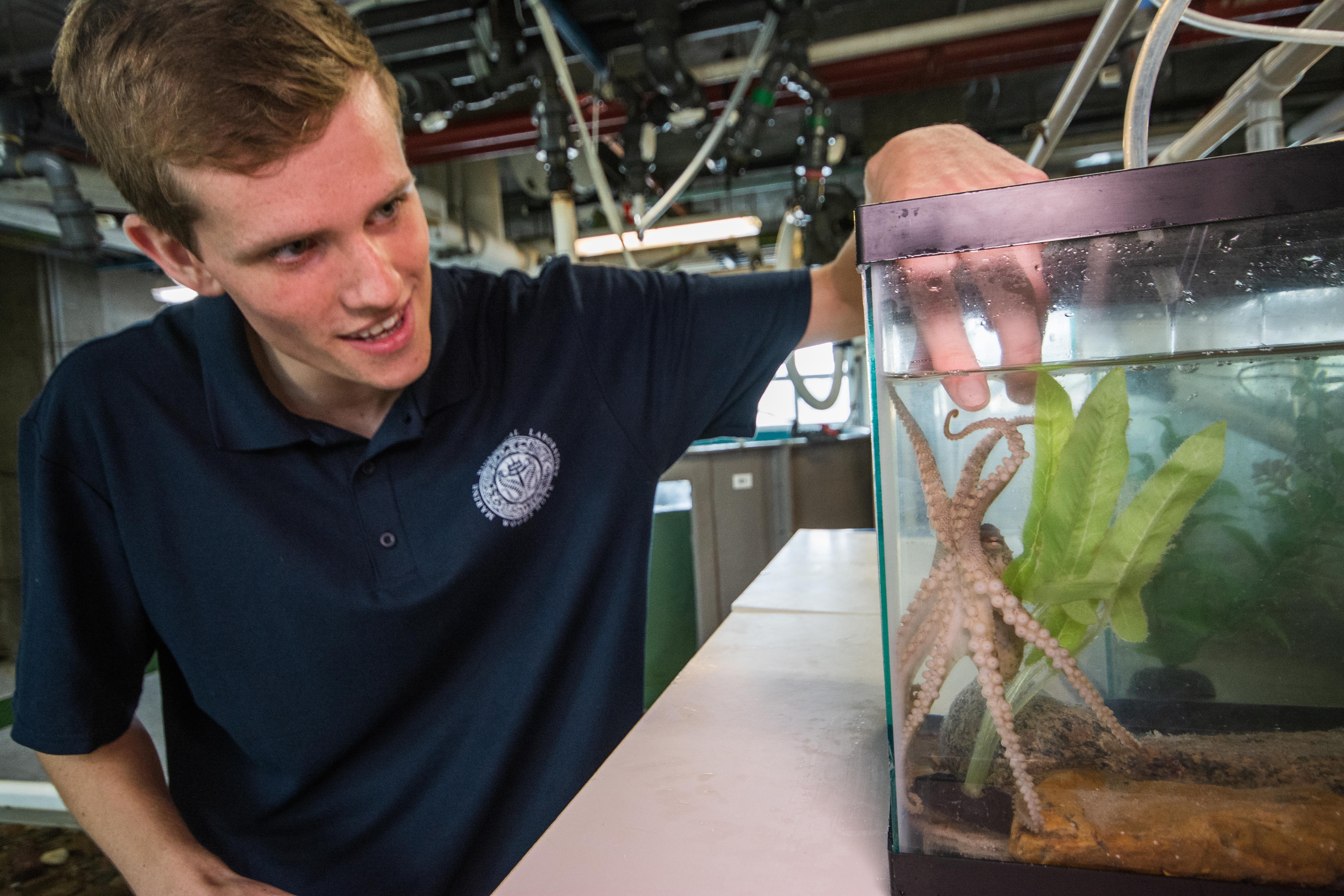Growing up, Marine Biology student Matt Everett always knew he wanted to be a scientist, and he always knew he wanted to break new ground. Discovering something no one had ever known before, paving new ground in science was a driving force behind his career choice.
In his co-op at the Marine Biological Laboratory (MBL), he’s doing just that.
Matt is working as a cephalopod aquarist at MBL in the small coastal town of Woods Hole which holds both MBL and the Woods Hole Oceanographic Institute, some of the biggest names in marine biology. The class Cephalopoda contains octopuses, squid, cuttlefish, and the nautilus, and Matt is working with seven species: the California Two-spot Octopus, the Stumpy Cuttlefish, the Flamboyant Cuttlefish, the Striped Pyjama Squid, and the Hawaiian Bobtail Squid, the Lesser Pacific striped octopus, and the Wonderpus. Hundreds of the animals bob around in tanks in a lab space filled with babbling filters and careful researchers.
As aquarists, Matt and his coworkers raise and care for these marine creatures, which is not an easy task. Cephalods are very choosy tenants. In addition to maintaining water temperature, various water quality parameters, and feeding the animals, constant care and attention is required. “Some of the flamboyant cuttlefish, we check on them six times per day,” Matt says, “if there’s too big of a shrimp in there, it can freak the animal out, and it can actually die from that.”
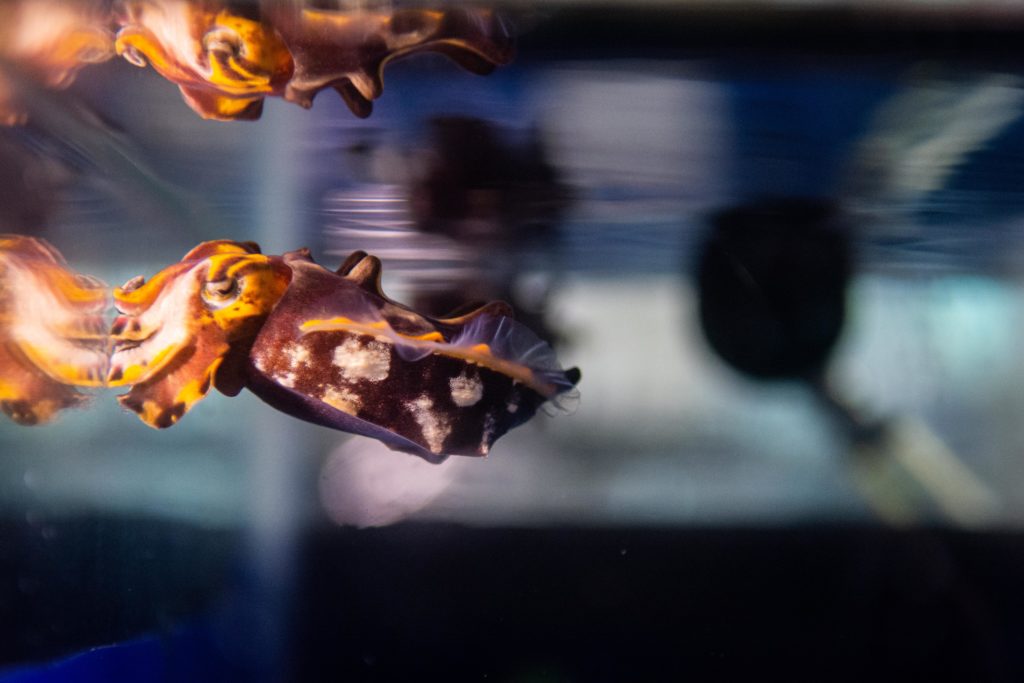
His main project, though, is where he’s breaking ground. Matt is raising the Lesser Pacific Striped Octopus, Octopus chierchiae, which has never been cultured in captivity before. Not much is known about O. chierchiae, they have yet to be studied thoroughly by scientists, partly because there hasn’t been a viable program to culture them. Native to the shallow waters of Panama and Nicaragua, a cohort of O. chierchiae now live in tanks in Woods Hole under Matt’s watchful eye.
Matt had no idea that he’d be working on a big project independently when he started. “Taylor came to me one day and said, ‘ok, you’re going to be here for six months, we want you to try to be the first one to culture this animal’.’’
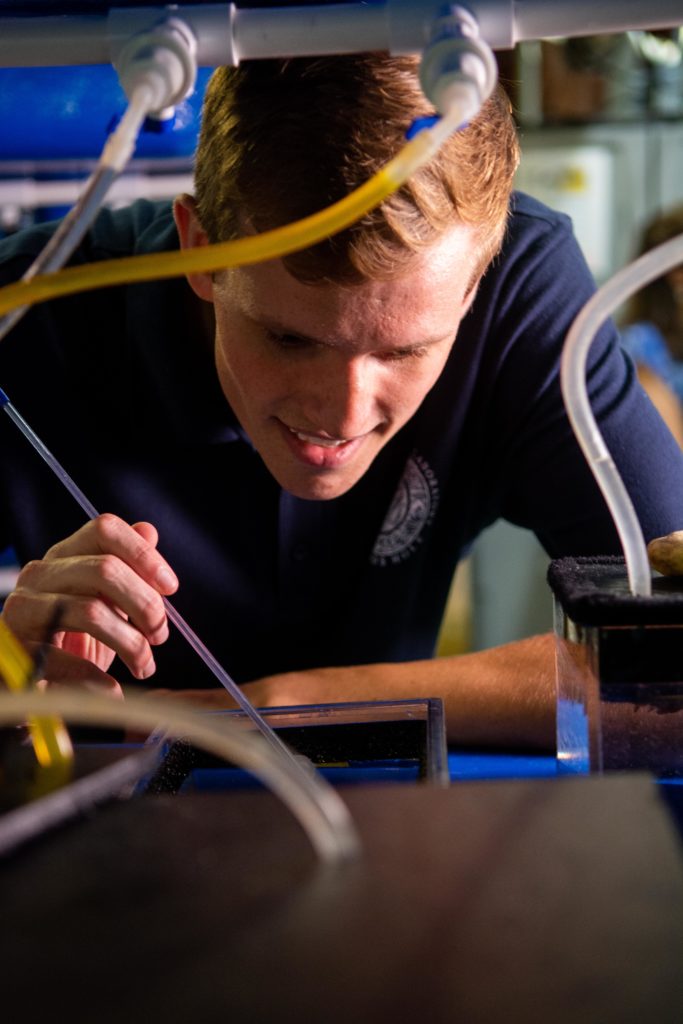
Matt Everett feeds a shrimp to a Lesser Striped Pacific octopus in the lab at the MBL. Photo by Tim Briggs
Raising a new species is “a little nerve wracking,” according to Matt. “On one hand, I’m achieving a dream and I’m getting to work hands-on with animals, doing something no one has done before. But at the same time, if I fail, then that’s just on me. I try to be aware of the big picture but focus on the day to day because that’s what’s keeping the animals alive.” His supervisors have had a very hands-off approach as well, encouraging him to be independent and take the project into his own hands. “I’ve asked them a question, ‘do you think I should do this?’ And he said, ‘I’m not going to answer that, it’s up to you, you’re the one in charge.” Matt has risen to this challenge, and dealt with many of the problems he’s encountered on his own, though Taylor and Brett will still help with personal experience if he needs it.
The cephalopod lab is only about a year and half old, and it has recently been experiencing some growing pains. Brett Grasse, the Manager of Cephalopod Operations, and Taylor Sakmar, Matt’s supervisor, came to the MBL from the Monterey Bay Aquarium, where Grasse managed the cephalopod program, which held over 30 species. In the new space at the MBL, Matt’s biggest challenge so far has been finding room for his octopuses, partly because they underestimated how many eggs would be laid. “We thought they laid clutches of eggs of about 30, because that’s what one of the clutches was. The second clutch, we’re up to about 45, so that’s a 50% increase. I ended up having to scramble to try to find homes for 50% more animals.” The chierchiae don’t play nice either, in fact they tend to eat each other. Finding appropriate homes for them has been a challenge on top of just having enough, “octos love to live in things, under things, kinda hidden away,” Matt said, “so with some of the hatchlings I’ve been trying out giving them different things to live in, like a different PVC nozzle, small PVC joints, pieces of rubber tubing, to try and see if they react differently to them.” In the wild, octopuses live in cracks and caves in the rocks to hide from predators, often hunting at night when it is safer.
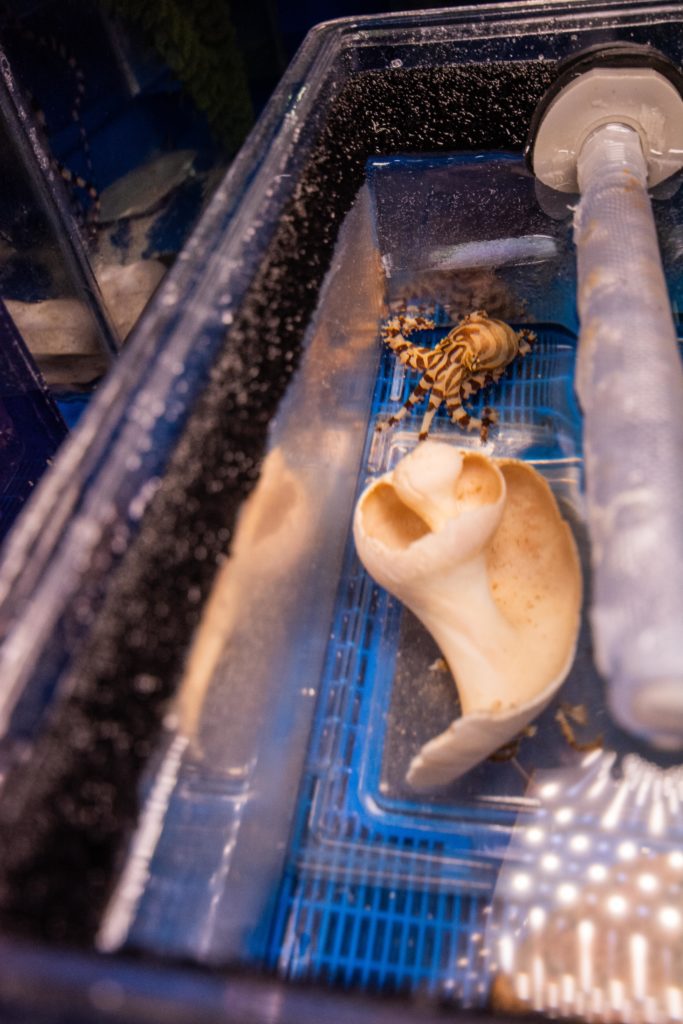
A Lesser Striped Pacific Octopus, Octopus chierchiae, displays its dark stripes in its tank at the MBL. Photo by Tim Briggs
While at the MBL, Matt has been able to expand his animal care repertoire, as his day to day has been extremely varied. “I could be building tanks, I could be doing water quality tests, I could be moving animals around, I could be receiving a shipment of animals that someone else has sent us, we could be packaging animals that we’re going to send to other people. I really like the dynamic work environment.” For Matt, this means there’s never a boring day on the job, because it’s rarely the same, something he’s always wanted in a job. “I don’t want to have a desk job where I sit and do paperwork, that does not appeal to me at all. I want to be working hands-on with animals because that’s what interests me, that’s what excites me. This job was the perfect fit for me.”
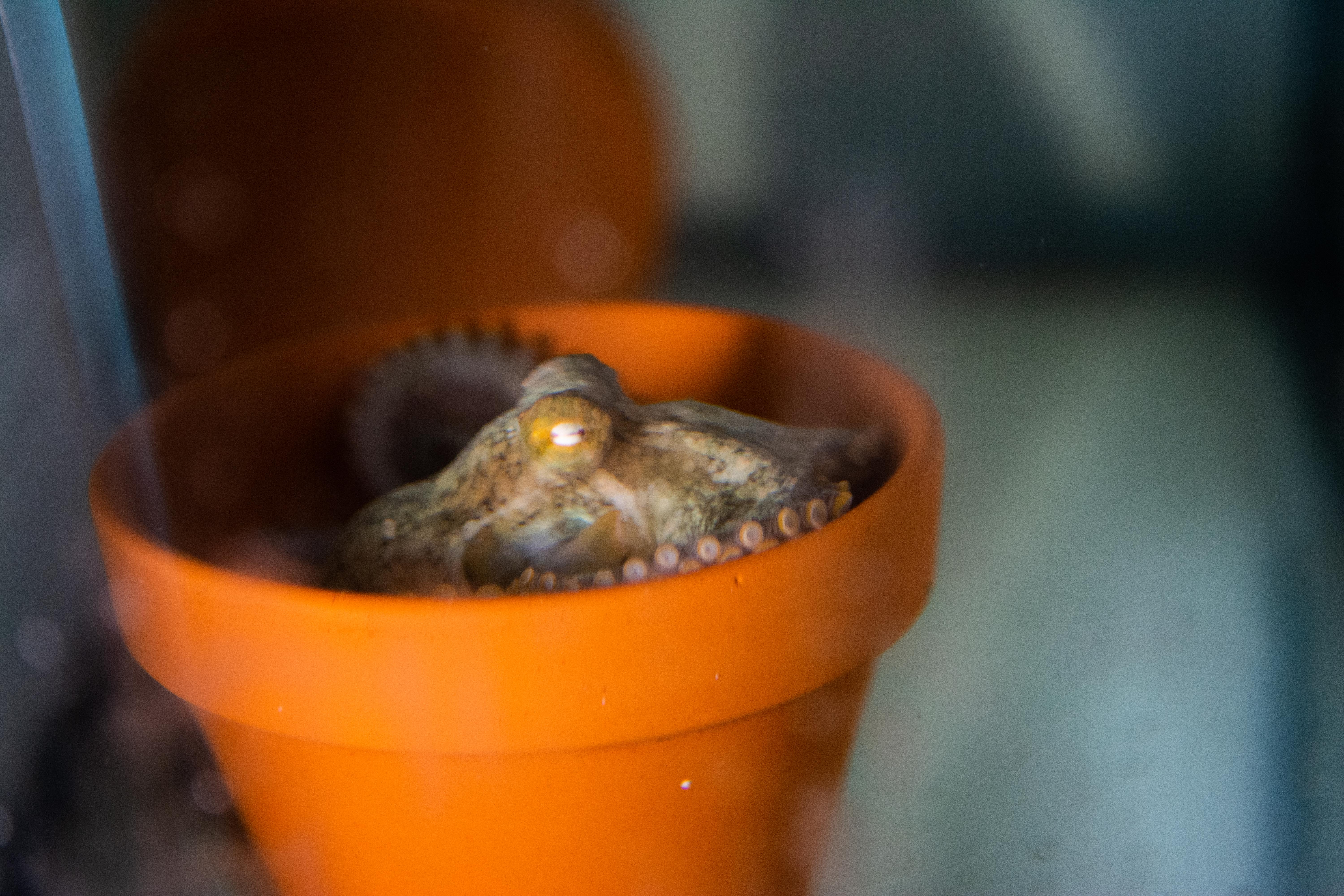

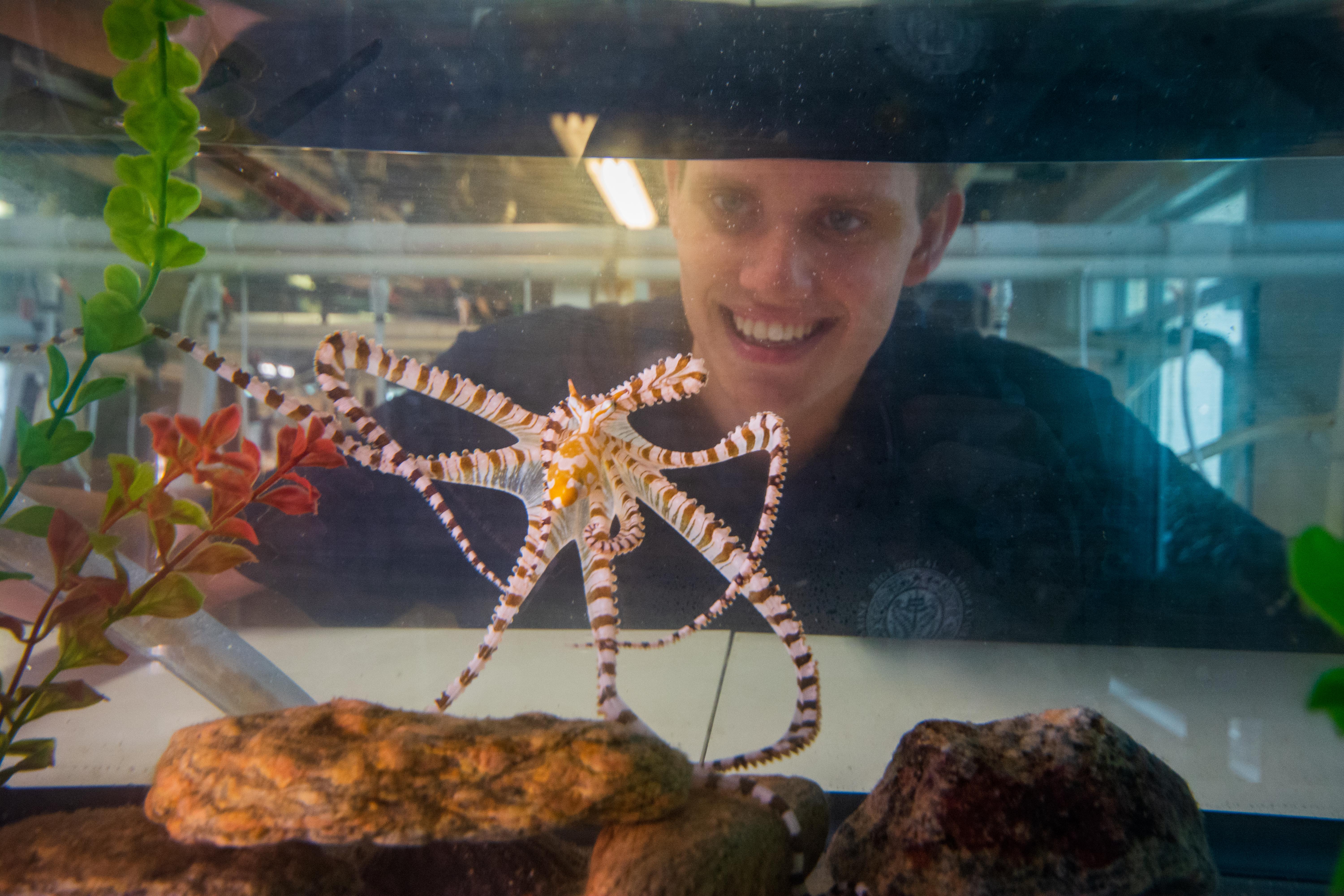

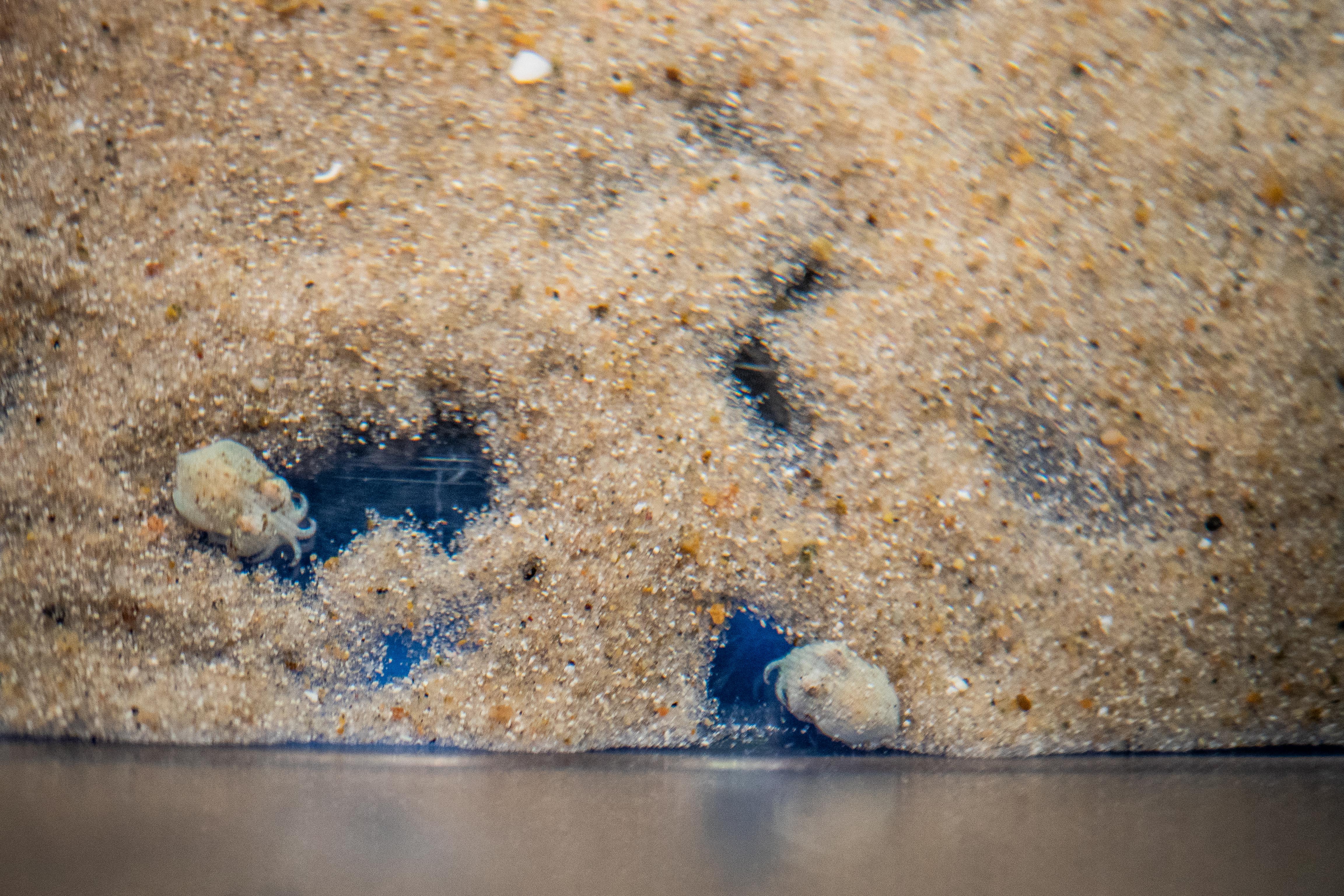
The cephalopod lab grows all these animals so that they can be used as model organisms for other researchers. One researcher at the MBL is sequencing the genomes of cephalopods, with one octopus genome published and two squid on the way, including the Hawaiian Bobtail squid. Another group of scientists is working on trans-generational epigenetic research, where traits are passed down through generations without changes to actual DNA, but the molecules around it. Matt and the rest of the lab hope that by culturing the Lesser Striped Pacific octopus, they’ll be able to create a new genetic model organism as well as learn more about its habits.
Matt has enjoyed working at the MBL, especially the perks of being immersed in the science culture. “Everyone is enthusiastic and cares about the ocean and the life that lives there, it’s a very different atmosphere that I haven’t experienced before.” Weekly lectures have allowed Matt to learn about the world class research happening in the surrounding labs. He’s looking forward to the rest of his time with the cephalopods, and hoping that he’s successful with his octopuses, but he’s trying not to get too swept up in the big picture. “The focus is kind of day to day, making sure the animals are alive, that they’re fed, that they’re happy. The rest will follow.”
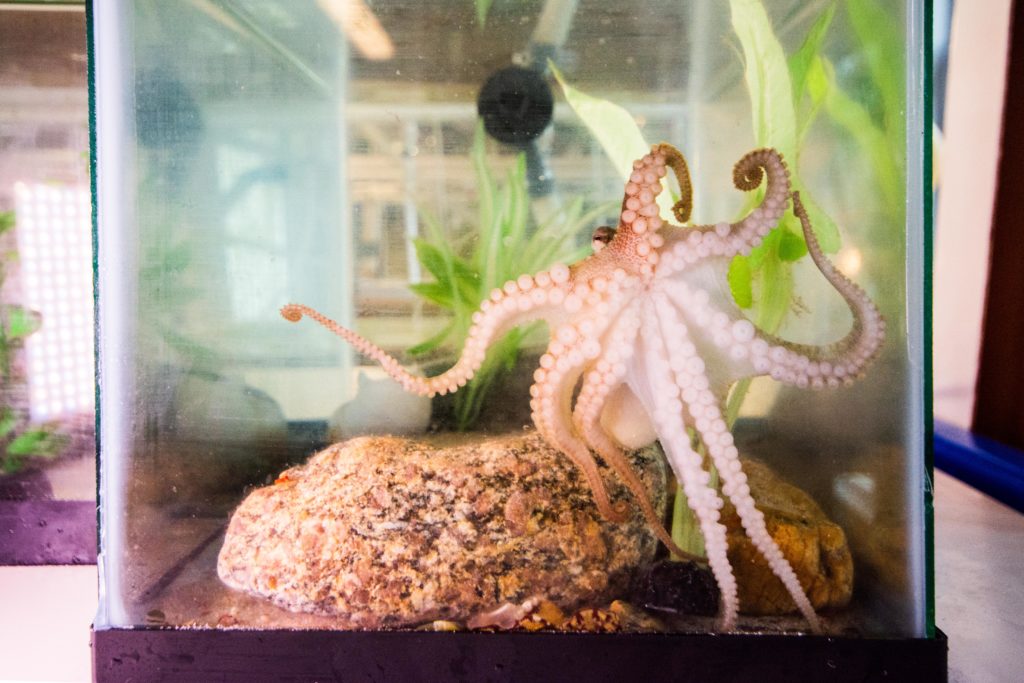
A California Two-spot octopus peers over its arms with one eye as it hugs the wall with 8 arms in the outreach tank at the MBL. Photo by Tim Briggs
